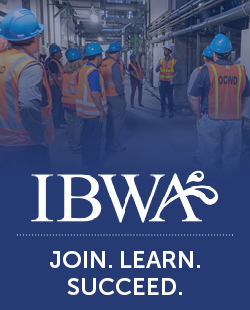Bottled Water & California
Bottled Water & California

The bottled water industry has a long and deeply-held tradition of effectively and responsibly protecting and managing our vital natural resources. Sustainable, protected, and naturally recharged water sources are the single most important aspect of our business. This commitment to environmental excellence holds true wherever bottled water facilities are located.
As many western states continue to face challenges related to drought conditions, the International Bottled Water Association and its members remain committed to the responsible and efficient use of all natural resources related to bottled water production. Our industry is proud to continuously be on the forefront of water conservation and management, the efficient use of water, and responsibly managing groundwater and spring water resources.
Learn more about how the bottled water industry works to ensure the availability of healthy hydration products and the sustainable management of water by visiting HydrateTheStates.org.
Any discussion of the bottled water industry’s water use should include these facts:
- Bottled water accounts for less than 0.01% of all the water used in the United States each year. Despite the bottled water industry’s size, the amount of water used is relatively tiny compared to tap water volumes.
- While it has sometimes been likened to tap water, bottled water achieved its position as the No.1 packaged beverage in the United States by enticing consumers away from other packaged beverages like soda and fruit drinks.
- While the health benefits of choosing bottled water over less healthy, sugar-sweetened beverages (like sodas and fruit drinks) may be obvious, the positive impact on the environment may be less apparent. The fact is that bottled water production uses less water and less energy than the production of those other packaged beverages. In fact, bottled water has the lowest water- and energy-use ratios of all packaged drinks.
- To create 1 liter of finished bottled water product for consumption, water bottlers only use (on average) 1.39 liters of water (and that includes the 1 liter of water that you drink) and 0.21 mega joules of energy. (For more, review the 2018 IBWA Water and Energy Use Study.)
- Consumers are not buying bottled water because of elaborate marketing campaigns; they are choosing bottled water instead of less healthy packaged beverages. Most people who drink bottled water also drink tap water, and that’s fine with us. Water is the healthiest beverage, and bottled water provides consumers with a safe, convenient, refreshing, and responsible choice.
- Even the production of 16.9 oz PET bottled water containers uses less water than producing other, same-size packages like aluminum cans, beverage cartons (packaging often constructed using paperboard, polyethylene plastic, plant-based plastic, and aluminum), glass bottles, and even PET soda bottles.
- Although both use PET plastic, bottled water containers are more efficient water users in container manufacturing because they can be thinner (need less plastic). PET soda bottles use more PET plastic due to their carbonation and/or bottling processes.
Bottled water is highly regulated
Bottled water is comprehensively regulated by the U.S. Food and Drug Administration (FDA) as a food. Tap water is regulated by the U.S. Environmental Protection Agency (EPA). By federal law, FDA regulations governing the safety and quality of bottled water must be at least as stringent as the EPA standards for tap water. And, in some very important cases like lead, coliform bacteria, and E. coli, bottled water regulations are substantially more stringent than EPA standards for tap.
Most bottled water is local
Despite what some bottled water critics claim, the fact is most of the bottled water from California sources is sold in California. It is simply not part of the U.S. bottled water industry’s usual business model to ship bottles of water thousands of miles from where it is produced due to high transportation costs.
Bottled water plants are located across the country and produce bottled water for customers in that area. This map shows the location of all IBWA’s member company bottled water plants, which are located throughout the United States and primarily serve customers in their local and regional markets.
Americans are making healthier choices
After years of increased soft drink consumption, American’s growing preference for bottled water has helped people find a path back to water as a healthier beverage of choice. Today people are drinking much more water than soft drinks and both tap water and bottled water are growing.
The bottled water industry supports a strong public water system, which is important for providing citizens with clean and safe drinking water. In fact, many bottled water companies use public water sources for their purified bottled water products. However, purified bottled water is not just tap water in a bottle. Once this water enters the bottled water plant, several processes are employed to ensure that it meets the FDA purified water standard. These treatments may include one or more of the following: reverse osmosis, distillation, micro-filtration, carbon filtration, ozonation, and ultraviolet (UV) light. The finished water product is then placed in a bottle under sanitary conditions and sold to the consumer.


